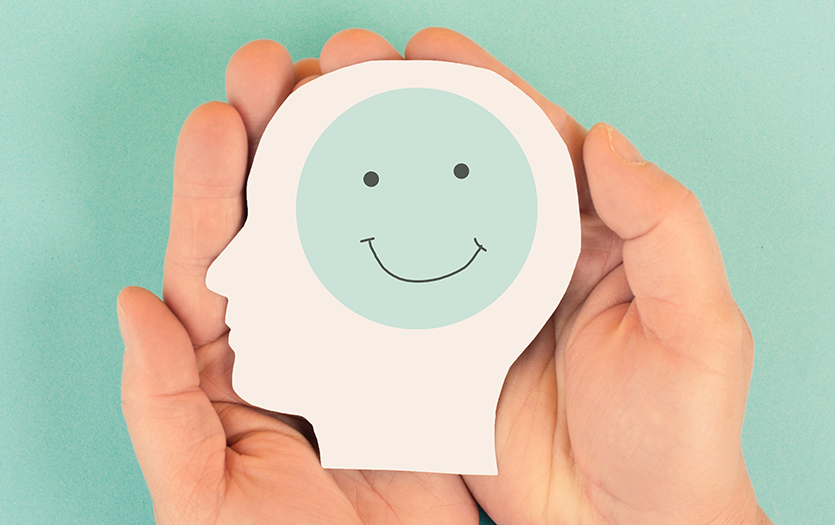
This post was written by Julie Shearer, MA, LMHC, LCAC, MAC, employee assistance specialist, Parkview Employee Assistance Program, Parkview Health.
Winters in the Midwest can be the perfect storm of darkness, cold weather, sugar overload and holiday stress. Unfortunately, this can trigger a condition known as Seasonal Affective Disorder (SAD), a form of depression typically recurrent during the fall and winter months when days are shorter.
While SAD and depression may seem like similar conditions, they have distinct differences. The difference between each disorder lies in the level of severity, ability to function and length of symptoms.
Major Depressive Disorder (MDD) can occur any time of the year, not just seasonally in the fall or winter. MDD is usually associated with symptoms such as loss of appetite, changes in weight, sleep difficulties (insomnia), low mood or irritability, feelings of worthlessness, diminished concentration, fatigue, and loss of interest in activities or feelings of pleasure. These symptoms must cause significant distress and last for at least two weeks to qualify or get diagnosed as depression.
On the other hand, SAD is often characterized by intense lethargy accompanied by low mood, overeating and oversleeping. This can be unique depending on the individual. Still, the primary differentiating factor with SAD symptoms is that they occur seasonally, in predictable patterns during colder months, over a minimum of two consecutive years.
Additionally, MDD is often more severe and debilitating over time when compared to SAD. So, if you’ve had intense feelings of sadness during the fall and winter months over the last two years, you’ve likely experienced SAD. Because of the similarities, it’s essential to pay attention to any changes in your mood, sleep patterns, energy level, concentration or thoughts so you can seek appropriate care immediately.
Moreover, the fall and winter months, particularly Thanksgiving to New Year’s, can be emotionally, relationally, and physically stressful and exhausting. So, even if MDD or SAD is not involved, many people experience a feeling of being “fed up” with winter, which may be called ‘winter blues.’ This is shorter-lived and less severe than SAD or MDD and does not impair daily function or relationships.
Risk factors for SAD and depression
Depression can happen at any age, but most people experience their first episode between the age of 20 and 30. Women are twice as likely to develop MDD or experience SAD. Studies also show that people with SAD have reduced availability of genes that transport serotonin to the brain. Since light impacts serotonin levels, living in a region with less sunlight or farther from the equator can affect their risk of SAD.
Other factors that may increase someone’s risk of developing SAD or MDD could include, but are not limited to, the following:
- A family history of SAD or depression
- Living far from the equator
- Regular drug/alcohol use
- Low levels of vitamin D
- Stressful life events
- Financial stress
- Unemployment
- Social isolation
How to care for yourself this winter
In addition to a treatment plan, small lifestyle changes can make a difference. A few strategies you could choose from to help combat winter blues and SAD could include:
- Opening shades and curtains during the day
- Utilizing a lightbox to help elevate mood
- Practicing proper sleep habits and hygiene
- Making movement and nutrition a priority
- Incorporating houseplants into your space
- Taking vitamin D (consult your physician)
- Connecting socially and volunteer
- Trying a new hobby
- Focusing on gratitude
Beyond these lifestyle modifications, a combination of light therapy, psychotherapy and medication have been found to be the most effective forms of treatment for SAD and depression. Speak with your physician to determine which treatment options are appropriate for you.
When to seek professional help
If symptoms impact your ability to function, carry out necessary tasks and disrupt your daily life, you should consult your primary care provider or a mental health professional. If you have thoughts of hurting yourself or others, feelings of hopelessness or concern about substance use or abuse, you should seek medical intervention immediately.
If you, or a loved one, are in need of support or treatment for depression or SAD, please contact the Parkview Behavioral Health Institute Helpline at 260-471-9440 or 800-284-8439 anytime 24/7.
If you are an employer looking for mental health resources for your workforce, the Parkview Employee Assistance Program offers confidential counseling services to your employees and members of their household. Contact [email protected] to learn more.
If you are an employee looking for assistance, your employer may offer free employee assistance program services to you and members of your family as part of your wellness benefits. Check with your human resources team to find out more.
References
Centers for Disease Control and Prevention
988 Suicide & Crisis Lifeline – Provides 24-hour, confidential support to anyone in a suicidal crisis or emotional distress (call or text). Call 911 in life-threatening situations.



